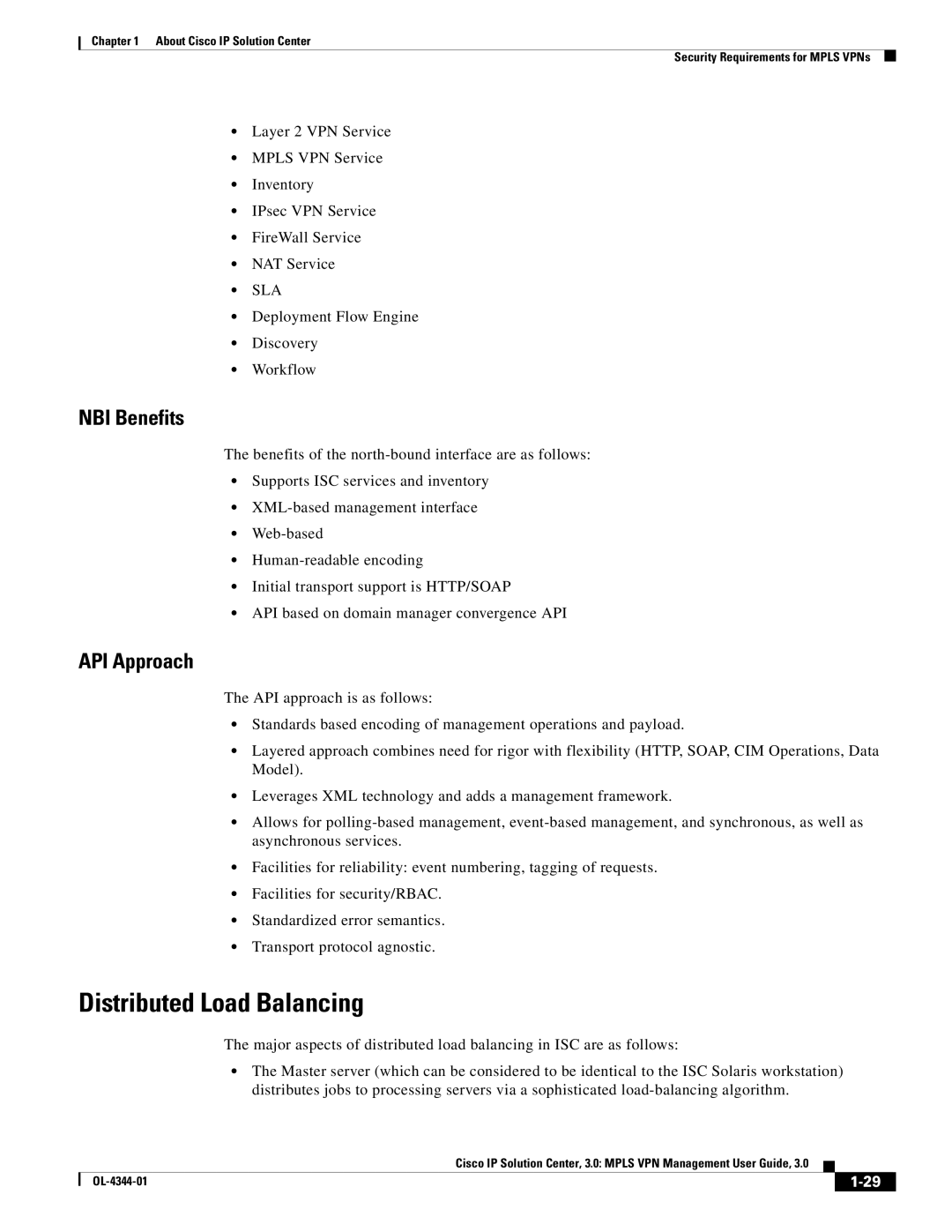
Chapter 1 About Cisco IP Solution Center
Security Requirements for MPLS VPNs
•Layer 2 VPN Service
•MPLS VPN Service
•Inventory
•IPsec VPN Service
•FireWall Service
•NAT Service
•SLA
•Deployment Flow Engine
•Discovery
•Workflow
NBI Benefits
The benefits of the
•Supports ISC services and inventory
•
•
•
•Initial transport support is HTTP/SOAP
•API based on domain manager convergence API
API Approach
The API approach is as follows:
•Standards based encoding of management operations and payload.
•Layered approach combines need for rigor with flexibility (HTTP, SOAP, CIM Operations, Data Model).
•Leverages XML technology and adds a management framework.
•Allows for
•Facilities for reliability: event numbering, tagging of requests.
•Facilities for security/RBAC.
•Standardized error semantics.
•Transport protocol agnostic.
Distributed Load Balancing
The major aspects of distributed load balancing in ISC are as follows:
•The Master server (which can be considered to be identical to the ISC Solaris workstation) distributes jobs to processing servers via a sophisticated
Cisco IP Solution Center, 3.0: MPLS VPN Management User Guide, 3.0
|
| ||
|
|
